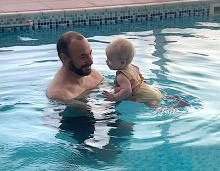Updated March 2025.
In England, scarlet fever notifications for the 2023-2024 season were higher than average, but below the high levels seen in the 2022-2023 season
In November 2022 there were 851 cases reported, compared with an average of 186 for the same timeframe in previous years.
It is caused by the Group A Streptococcus (GAS) which also causes impetigo and strep throat.
Although most Strep A infections such as scarlet fever are mild and can be treated easily with antibiotics, in some rare cases there can be complications such as invasive group A streptococcus (iGAS).
If your child is unwell with Group A Strep symptoms you should seek medical help immediately.
For more information about Group A Strep infections and what to do if your child starts to show symptoms you can download our information leaflet here.
Is scarlet fever common?
People sometimes mistakenly believe that scarlet fever is a tropical disease but in fact it is common here in the UK.
The illness, also known as scarlatina, is highly infectious and strikes most commonly in children under the age of ten, although people of any age can get it.
It is caused by bacteria known as group A streptococcus (GAS) which are found on the skin and the throat. It is easily treated with medication and antibiotics.
What are the symptoms of scarlet fever?
The most usual symptoms are a sore throat, high temperature and flushed, red cheeks which resemble sunburn, as well as a blotchy rash and swollen glands in the neck.
On white skin the rash looks pink or red. On brown and black skin it might be harder to see a change in colour, but you can still feel the rash and see the raised bumps.
Scarlet fever is sometimes accompanied by vomiting, and a white coating on the tongue. Children who have recently had impetigo may later develop scarlet fever.
The rash usually starts on the chest or stomach before spreading to other areas. The blotches may join up leaving large red patches of skin, which turn white if you press a glass on them. The white coating on the tongue may peel off after a few days leaving it red and swollen – this is known as ‘strawberry tongue’.
Will scarlet fever go away on its own?
It is important to treat scarlet fever straight away. If left untreated for too long, there may be complications including ear and lung infections.
If you have scarlet fever a GP will prescribe antibiotics. These will:
-
help you get better quicker
-
reduce the chance of a serious illness, such as pneumonia
-
make it less likely that you'll pass the infection on to someone else
In severe cases, the illness may lead to pneumonia, meningitis and rheumatic fever, so it’s important to see a doctor as soon as you suspect your child has it, so appropriate antibiotics can be prescribed and taken as soon as possible
The quicker it is diagnosed, and medication prescribed, the faster your child will recover and the less likelihood there will be of complications.
GPs may take a throat swab or ask for a blood test to confirm their diagnosis.
To help with symptoms, in addition to the prescribed medication, the patient should be given cool drinks and soft food to eat that doesn’t irritate their throat.
Calamine cream and antihistamines can help with itching.
Scarlet fever lasts for around 1 week.You can spread scarlet fever to other people until 24 hours after you take your 1st dose of antibiotics. If you do not take antibiotics, you can spread the infection for 2 to 3 weeks after your symptoms start.
'When I took off his vest at bath time I got a shock'
Sara Jenkins-Wright thought her four-year-old son had a bad cold until she undressed him one evening and saw the rash on his chest. “He had been really grisly for a few days but there were lots of colds and sniffles at his nursery, so I thought it was just that,” Sara said.
“When I took off his vest at bath time, it was a real shock. His chest was red and blotchy. We rang 111 and from my description they told us it was probably scarlet fever but advised us to go to the doctor, and the GP confirmed it. I had never heard of this illness before, so it gave us a bit of a fright.”
Her doctors prescribed antibiotics and her son was well again about a week later.
How do I stop other members of my family catching it?
Doctors say that because scarlet fever is contagious, tissues should be used to catch coughs and sneezes, and then quickly discarded, and families should avoid sharing towels or bed linen, if a child is infected.
Hands should be washed regularly to avoid spreading germs.
There is currently no vaccine for scarlet fever.
Further information
This article was written for the Early Years Alliance by Dorothy Lepowska-Hudson in 2019 and is for information purposes only. To get a diagnosis for you or your family, you should always consult a medical professional.







